Bloodstream infection in pediatric patients with intestinal failure and central venous catheters

We conducted a retrospective cohort study of febrile patients younger than 18 years with diagnosis of intestinal failure requiring a central venous catheter for home parenteral nutrition to identify factors associated with normal blood cultures to identify a low-risk subset” Fischer et al (2019). Abstract: OBJECTIVES: This study aimed to describe demographic, clinical, and laboratory […]
Accuracy and safety of intracavitary ECG guidance for neonatal PICC placement

The purpose of this study is to investigate the accuracy and safety of intracavitary electrocardiogram (IC-ECG) guidance for the localization of peripherally inserted central catheter (PICC) in neonatal patients” Ling et al (2019). Abstract: The purpose of this study is to investigate the accuracy and safety of intracavitary electrocardiogram (IC-ECG) guidance for the localization of […]
Point prevalence survey of peripheral venous catheter usage

The objectives of this survey were to estimate the prevalence of PVC and PVC-associated infections on peripheral wards of a large tertiary care hospital in Germany. The collected data may be utilized for a tailored infection prevention intervention in the future” Aghdassi et al (2019). Abstract: BACKGROUND: Bloodstream infections (BSI) are among the most frequently […]
Treatment of PICC-related thrombosis reviewed
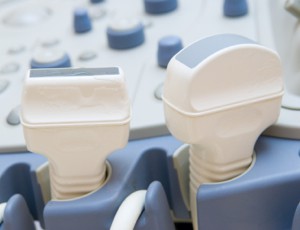
We performed a retrospective analysis of hospitalized adult patients diagnosed with CRT at our center. We determined rates of progressive thrombosis and bleeding in cohorts of patients who underwent catheter removal vs those who had catheters removed and received anticoagulation” Shatzel et al (2019). Abstract: Peripherally-inserted central catheters (PICCs) are commonly used during hospitalization. Unfortunately, […]
National evaluation of safety peripheral intravenous catheters

This article presents an excerpt of a national evaluation undertaken by an independent team of NHS senior clinicians from different fields, commissioned by the Department of Health and Social Care into everyday healthcare consumables” Guerrero (2019). Abstract: Studies have demonstrated that up to 90% of all inpatients require the insertion of some form of an […]
Stability of cefuroxime for administration by continuous infusion
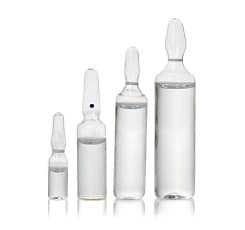
This study aims to determine the stability of a 90 mg/mL cefuroxime sodium solution. Cefuroxime sodium was reconstituted and mixed with 50-mL 0.9% saline to produce 90 mg/mL solution in polypropylene syringes which were stored at 4 °C, 25 °C and 40 °C” Vercheval et al (2018). Abstract: Continuous infusions of β-lactam antibiotics increase pharmacokinetic/pharmacodynamic target attainment. However, this way […]
Experience of a subcutaneously anchored sutureless system for securing central venous catheters

This article reports the results of three prospective clinical studies conducted in a university hospital regarding the efficacy, safety and cost effectiveness of a subcutaneously anchored sutureless system for securing central venous catheters” Pittiruti et al (2019). Abstract: This article reports the results of three prospective clinical studies conducted in a university hospital regarding the […]
Implementing an e-learning education program for syringe pump use
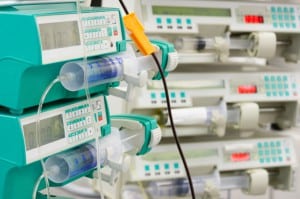
The aim of the present study was to challenge the implementation of an e-learning education program for syringe pump use” Saint-Marc metal (2019). Abstract: To prevent the incidence of risks imputable to human error during the process of preparing the infusion pump, clarity in teaching and learning are required. Because traditional classroom training is difficult […]
Sodium bicarbonate catheter lock solution reduces hemodialysis catheter loss

The objective of this study was to determine the safety and efficacy of using sodium bicarbonate catheter lock solution (SBCLS) as a means of preventing HD catheter loss due to CRT and CRBSI” El-Hennawy et al (2019). Abstract: BACKGROUND: There is no ideal lock solution that prevents hemodialysis (HD) catheter loss due to catheter-related thrombosis […]
Paediatric nurses’ adoption of aseptic non-touch technique

To provide insight into the challenges faced by clinical staff adopting ANTT during intravenous therapy” Isaac et al (2019). Abstract: BACKGROUND: In 2015, NHS Wales introduced a national standardised approach to aseptic non-touch technique (ANTT). This approach aims to standardise practice and promote better clinical outcomes. AIM: To provide insight into the challenges faced by […]
Oral 24% sucrose for pain control in healthy newborns receiving venipuncture

To test the hypothesis that oral administration of 24% sucrose associated with nonnutritive sucking in healthy newborns receiving venipuncture beyond the first week of life controls pain and pain-related variation in heart rate (HR) and noninvasive oxygen saturation (SpO2)” De Bernardo et al (2019). Abstract: OBJECTIVE: To test the hypothesis that oral administration of 24% […]
Azygos vein cannulation after catheterisation of the left internal jugular vein

Hereby, a case of a 15-month-old child is presented with a fully functional Hickman catheter introduced via the left internal jugular vein. The tip of the catheter was misplaced into the azygos vein” Kampouroglou et al (2019). Abstract: Central venous catheterisation is routinely performed in paediatric patients to facilitate therapeutic management when long-term vascular access […]
Antibiotic stewardship and the treatment of uncomplicated lower limb cellulitis

The expense of these visits is vast and places avoidable strain on health care dollars. The average hospital stay (5 days) for patients treated for cellulitis costs roughly $7341” Boothe and Diven (2019). Reference: Cellulitis commonly causes patient emergency department visits and hospital admits in the United States. Since the emergence of Methicillin-resistant Staphylococcus aureus […]
Adverse effects associated with parenteral nutrition overfeeding
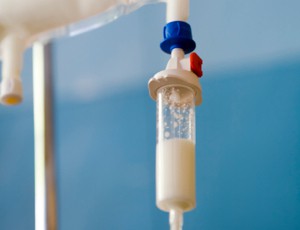
Parenteral nutrition (PN) overfeeding is a potential risk factor in the development of infections and other complications including hyperglycaemia, refeeding syndrome and liver dysfunction. This study was conducted to evaluate the impact of a quality improvement initiative to reduce PN overfeeding” Franck (2019). Abstract: OBJECTIVE: Parenteral nutrition (PN) overfeeding is a potential risk factor in […]
Overview of total intravenous anaesthesia

Total intravenous anaesthesia (TIVA) is a technique to induce and maintain general anaesthesia exclusively with intravenous anaesthetic agents, thereby avoiding the use of inhalational agents” McGrenaghan and Wilson (2019). Abstract: Total intravenous anaesthesia (TIVA) is a technique to induce and maintain general anaesthesia exclusively with intravenous anaesthetic agents, thereby avoiding the use of inhalational agents. […]
Identification of early migration of peripherally inserted central catheter
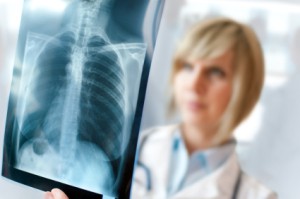
Focused ultrasound identified a hyperechoic tube with thrombosis in left jugular vein, which indicated migration of PICC” Shih et al (2018). Abstract: A peripherally inserted central venous catheter (PICC) has been widely applied to central venous assess. There were some known complications such as phlebitis, leakage, blockage, dislodgment, breakage, or malposition of PICC. Catheter migration […]
Ultrasound-guided placement of a midline catheter
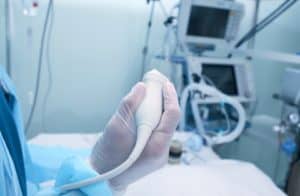
The midline catheter is a viable choice in patients with difficult vascular access due to extensive postburn scar contractures” Yokota et al (2019). Abstract: RATIONALE: Obtaining venous access in a patient with extensive postburn scar contractures is a challenge. PATIENT CONCERNS: A 39-year-old woman suffered a burn 2 years previously with a total body surface […]
Sequential intravenous-to-oral outpatient antibiotic therapy for MRSA bacteraemia

We provide preliminary evidence that selected patients with MRSA BSI may have at least equivalent clinical outcomes with OOAT versus OPAT and provide support to ongoing and future studies evaluating oral antibiotics for MRSA BSI” Jorgensen et al (2019). Abstract: Background: Published guidelines call for prolonged courses of intravenous (iv) antibiotics for the treatment of […]
Barriers to ultrasound guidance for central venous access
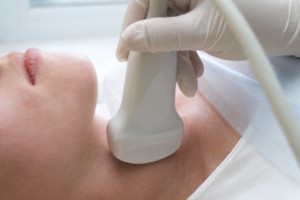
The goal of this study was to investigate current practice for central venous catheterization in anaesthesiology and intensive care in the Netherlands, identify barriers for further implementation of US guidance and to evaluate whether personality traits are associated with the choice of technique” Scholten et al (2019). Abstract: Accumulating evidence shows that ultrasound (US) guidance […]
Conservative fluid management after sepsis resuscitation

The feasibility and clinical outcomes of conservative fluid management after sepsis resuscitation remain unknown” Semler et al (2019). Abstract: RATIONALE: The feasibility and clinical outcomes of conservative fluid management after sepsis resuscitation remain unknown. OBJECTIVES: To evaluate the effect of a conservative fluid management protocol on fluid balance and intensive care unit (ICU)-free days among […]
Central venous catheter outcomes in critically ill children

This data suggests that the femoral site may be an important risk factor that should be considered in prevention strategies for catheter-associated VTE in children” Derderian et al (2018). Abstract: BACKGROUND: Central venous catheters (CVC) are vital to the management of critically ill children. Despite efforts to minimize complications, central line associated bloodstream infection (CLABSI) […]
Long peripheral IV catheters for deep arm vein venous access

Long peripheral catheters (LPCs) offer a quick, simple and cost-effective alternative for venous access in intensive care patients with difficult venous access, but the decision to use them must be balanced against an assessment of harm” Badger (2019). Abstract: PURPOSE: Long peripheral catheters (LPCs) offer a quick, simple and cost-effective alternative for venous access in […]
Focal myositis and contracture secondary to amiodarone extravasation
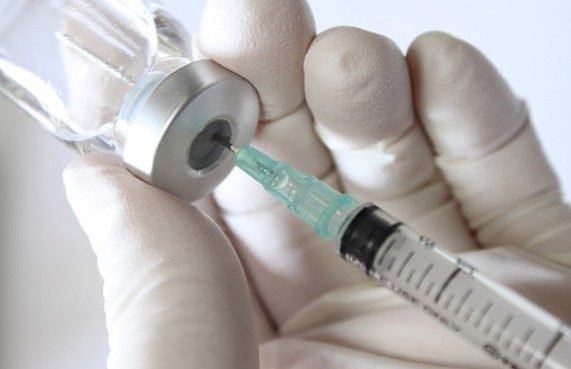
Amiodarone extravasation is well recognised to cause local injection site reactions. Involvement of deeper tissues is rare. To our knowledge, this is only the second description of a consequent focal myositis in the literature” Ledingham and Cordato (2019). Abstract: A 63-year-old man underwent cardioversion of atrial fibrillation with intravenous amiodarone through an antecubital fossa cannula. […]
Complications associated with central venous access for hemodialysis in cancer patients

Central venous catheter implantation for hemodialysis is commonly performed in large centers and its complications are sometimes associated with insufficient training of those who perform it, but may also be related to the patient’s clinical condition” Silva (2018). Abstract: Central venous catheter implantation for hemodialysis is commonly performed in large centers and its complications are […]
Impact of perioperative dextrose infusion and postoperative nausea and vomiting

In this meta-analysis, we investigated the use of an intraoperative or postoperative infusion of dextrose for the prevention of postoperative nausea and vomiting” Zorrilla-Vaca et al (2019). Abstract: BACKGROUND: Perioperative IV dextrose infusions have been investigated for their potential to reduce the risk of postoperative nausea and vomiting. In this meta-analysis, we investigated the use […]
Buttonhole versus stepladder cannulation for home hemodialysis

Our primary objective was to determine the feasibility of randomizing patients with ESKD training for home hemodialysis to buttonhole versus stepladder cannulation of the AVF. Secondary objectives included training time, pain with needling, complications, and cost by cannulation technique” Huang et al (2019). Abstract: BACKGROUND AND OBJECTIVES: Canadian home hemodialysis guidelines highlight the potential differences […]
Skin complications associated with vascular access devices
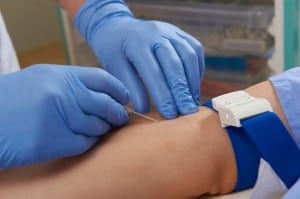
To estimate the incidence of vascular access-associated skin complications, and to identify patient, catheter and healthcare-related characteristics associated with skin complication development” Ullman et al (2018). Abstract: BACKGROUND: Vascular access devices are widely used in healthcare settings worldwide. The insertion of a vascular access device creates a wound, vulnerable to irritation, injury and infection. Vascular […]
A narrative review of the success of intramuscular gluteal injections

This paper is a review of the variables that affect the success of intramuscular injections and the implications that these success rates have in psychiatry and general medicine” Soliman et al (2018). Abstract: There are 12 billion injections given worldwide every year. For many injections, the intramuscular route is favoured over the subcutaneous route due […]
Outpatient ertapenem therapy in an ESBL-high-prevalence area

So far there are no reports on the efficacy of outpatient antimicrobial therapy in Mexico. Our objective was to determine the outcomes, safety, and cost of outpatient ertapenem therapy (OET) in our hospital” Ortiz-Álvarez et al (2018). Abstract: INTRODUCTION: Outpatient parenteral antimicrobial therapy is a safe, effective, and convenient way of administering antimicrobials for a […]
Cost of hospital administration of multiple myeloma drugs in Finland

To estimate the drug administration, travelling, and productivity costs associated with infusion or subcutaneous proteasome inhibitor (PI) treatments (specifically carfilzomib and bortezomib) for multiple myeloma (MM) patients in Finland” Mankinen et al (2019). Abstract: AIM: To estimate the drug administration, travelling, and productivity costs associated with infusion or subcutaneous proteasome inhibitor (PI) treatments (specifically carfilzomib […]

